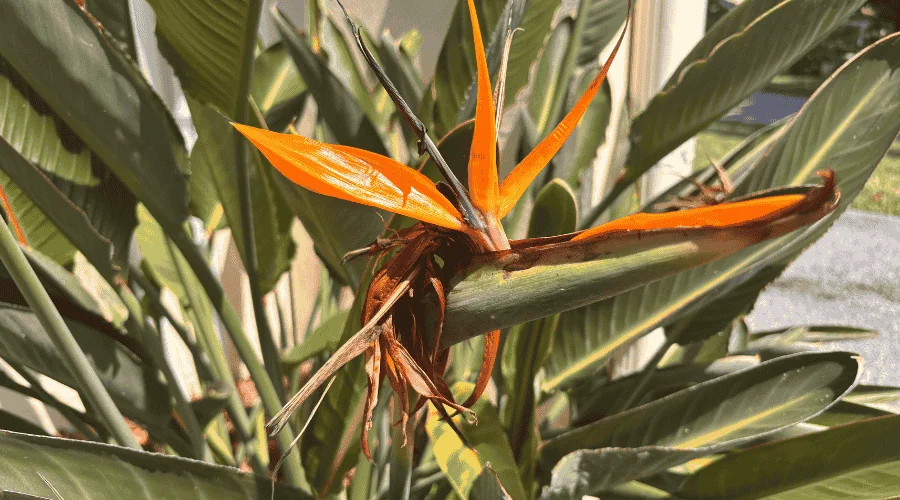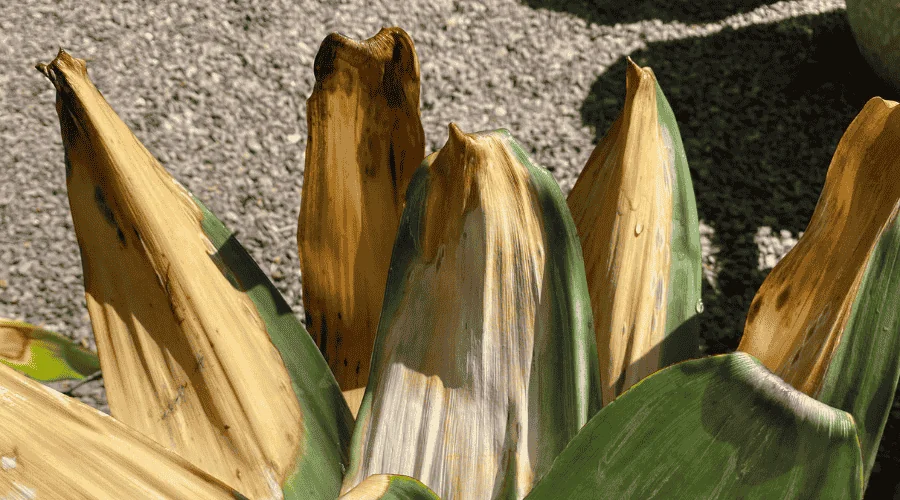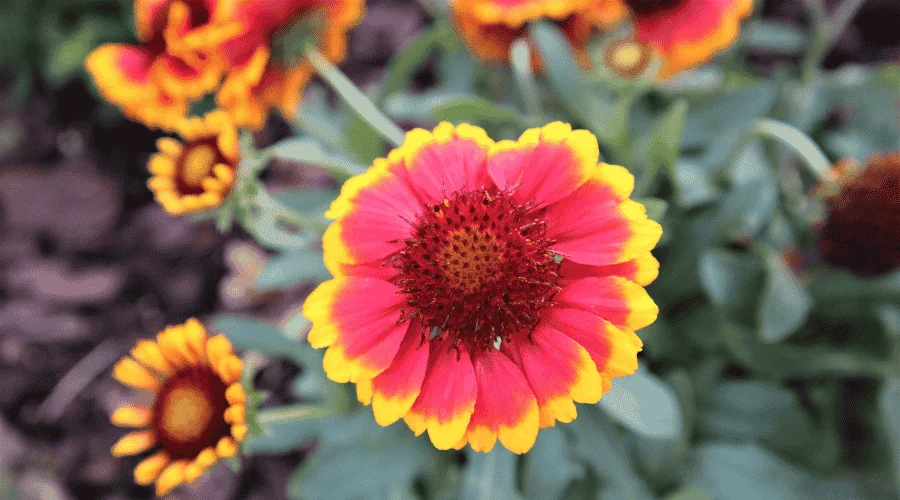By Amanda Rose Newton
By August, even the most resilient garden favorites can look a little weary. Crispy, brown edges on leaves, wilted stems, and stalled growth are all signs of heat stress. While your first instinct may be to let nature take its course, a little strategic pruning can go a long way in helping plants recover and thrive once temperatures cool down.

Why Leaves Turn Crispy in Summer
Heat stress happens when a plant loses more water through transpiration than its roots can take in. Combine that with sandy Central Florida soil, afternoon storms that evaporate quickly, and blazing sunshine, and plants start to sacrifice older or weaker leaves to conserve energy. The result? Dry, crispy foliage that isn’t doing the plant any good.

The Case for Pruning During Heat Stress
Removing dead or heavily damaged leaves isn’t just about aesthetics. Here’s how pruning helps:
- Reduces stress: Damaged leaves still demand water and nutrients, even if they’re not photosynthesizing efficiently.
- Improves airflow: Thinning out dense foliage reduces humidity around leaves, discouraging fungal issues that thrive in Florida’s summer rains.
- Redirects energy: Pruning tells the plant to focus on root strength and healthy new growth rather than keeping struggling leaves alive.

When (and When Not) to Prune
Timing matters. Prune in the early morning or late evening when plants are less stressed by heat. Avoid cutting back during the hottest part of the day, as open wounds can lose moisture quickly. Also, don’t go overboard—removing too much at once can shock the plant. As a rule of thumb, take no more than one-third of the foliage at a time.

How to Prune Crispy Summer Plants
- Sanitize your tools. Prevent disease spread by cleaning pruners with rubbing alcohol.
- Target the worst damage. Snip off leaves that are more than halfway brown or shriveled.
- Shape for airflow. Thin out crowded stems to keep air moving. This is especially helpful for hibiscus, roses, and vegetables like tomatoes and peppers.
- Cut at the right spot. Prune back to just above a healthy leaf node or bud to encourage new growth.
- Follow with care. Water deeply at the roots (not on the leaves), and consider adding a layer of mulch to retain soil moisture.

Which Plants Benefit Most from Summer Pruning?
Not every plant responds the same way to pruning in the peak of Florida’s heat. Here are a few that benefit the most when trimmed back during stressful months:
- Flowering Shrubs: Hibiscus, plumbago, and pentas often drop flowers and crisp around the edges in late summer. A light prune encourages a flush of blooms once the weather cools.
- Perennials: Lantana, gaillardia, and salvia handle a summer haircut well and bounce back quickly with fresh growth.
- Vegetables: Tomatoes, peppers, and eggplants especially benefit from thinning out overcrowded or scorched leaves to improve airflow and reduce disease pressure.
- Annuals: Zinnias, cosmos, and marigolds will perk up after deadheading and trimming spent stems, rewarding you with longer bloom cycles.
On the other hand, plants to avoid heavy pruning in summer include palms (which rely on older fronds for nutrient recycling), turfgrass (better managed with irrigation), and delicate tropicals like orchids or ferns that are better off left to recover naturally.

Think of summer pruning as first aid—a way to help your plants survive the season and prepare for a fresh flush of growth in fall. Pairing pruning with good watering practices, mulching, and some shade protection (like a temporary shade cloth for veggies) ensures your garden stays resilient through Florida’s toughest months.


